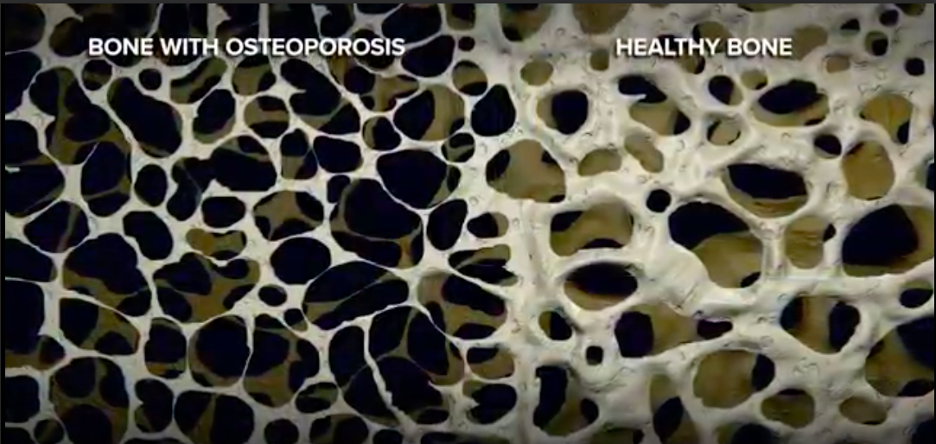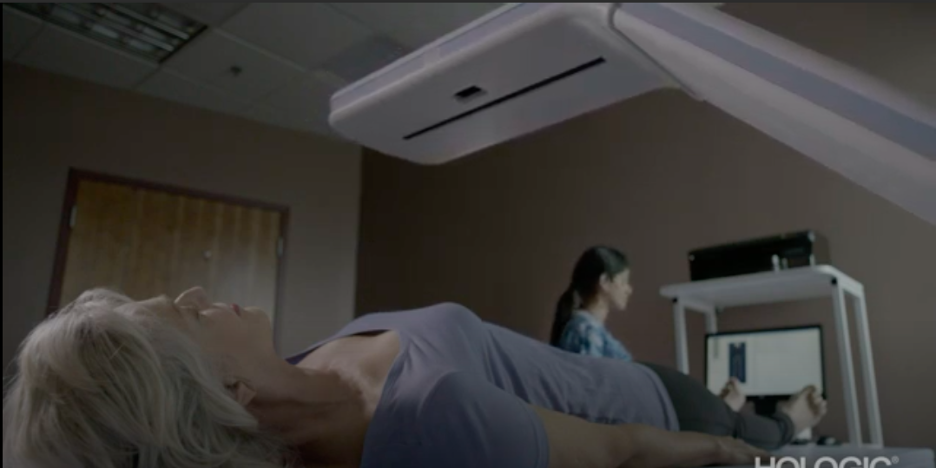Healthy Bones, Healthy Life: Understanding Early Detection of Osteoporosis with DXA

It’s always a good time to prioritize your bone health by learning more about osteoporosis and scheduling a DXA scan—but if you need a reminder to do so, May is the perfect time! In honor of National Osteoporosis Awareness and Prevention Month, read on to understand your risk factors, screening eligibility, and what to expect during a bone density scan on Horizon® DXA system. Then, head over to our website to easily find a scan near you. Better bone health starts now!
Breaking Down the Facts about Osteoporosis
You’ve likely heard about osteoporosis, but might feel confused or overwhelmed given all of the information—and even myths—out there about the disease and who’s at risk. We’re here with the facts.
Osteoporosis is a skeletal disease that thins and weakens the bones. It makes your bones less dense and more fragile, which means you’re more likely to experience a fracture.1 Unfortunately, osteoporosis is often referred to as “The Silent Disease” because it may not have any signs or symptoms until a break occurs.1

It’s also a disease that affects a significant portion of the population. In the U.S. alone, osteoporosis causes two million broken bones each year.1 One in two women, and up to one in four men, over age 50 in the U.S. will experience an osteoporosis fracture.1 This can result in pain, decreased mobility, and a reduction in your daily quality of life.
The good news is that osteoporosis can be prevented and treated—and early detection can make a difference.2 The first step is to understand your risk factors, so you can determine if a bone density scan on DXA is right for you.
Understanding Your Risk Factors for Osteoporosis
When it comes to determining whether you need a bone scan, there are both controllable and uncontrollable factors that can determine your personal risk. The Bone Health and Osteoporosis Foundation recommends getting screened if you are:
● A woman age 65 or older, or a man age 70 or older
● You’ve broken a bone after age 50
● You’re a woman of menopausal age (average age 51) with risk factors
● You are a postmenopausal woman under age 65 with risk factors
● You are a man age 50 or older with risk factors
It’s important to note that while osteoporosis does affect more women than men, it’s not just a women’s disease! Each year, about 80,000 men will break a hip due to osteoporosis—and men older than age 50 are more likely to experience an osteoporatic bone fracture than they are to get prostate cancer.3 Because many men may falsely believe they aren’t as risk, it’s especially important for this group to understand their bone health and seek information about early detection.
In addition to the age and gender factors above, the following diet, family history, and lifestyle factors can also play a role in your risk levels:
● A family history of osteoporosis
● Insufficient calcium and vitamin D intake
● Smoking and excessive alcohol intake
● An inactive lifestyle
● Rapid weight loss
Read a full list of potential risk factors on our website, and talk to your doctor with questions about whether you should be scanned.
Early Detection is Essential
Osteoporosis is a chronic disease that can have devastating effects to your health and lifestyle, so it’s crucial to detect the signs as early as possible in case you need treatment. A bone density test, like the one on Horizon® DXA system, is the only test that can diagnose osteoporosis BEFORE a broken bone occurs.4 That means even if you aren’t experiencing any symptoms of the disease, a DXA scan can determine if you have early signs of osteoporosis that might otherwise go unnoticed.
The test works by measuring the bone mineral density (BMD) of bones in your hip, spine, and other areas. You can expect a quick, non-invasive scan that takes place while you’re lying on a comfortable padded table.5 And that’s it! After your scan, your provider will follow up with results and a treatment plan if osteoporosis is detected.

Answering Frequently Asked Questions About Bone Mineral Density Scans
1. Will my scan be covered by insurance?
Most likely, yes! Bone mineral density scans require a physician’s order and are covered by most private insurance when medically necessary (if you have risk factors for osteoporosis). As a routine screening, BMDs are covered by Medicare every two years.
2. Will I be exposed to radiation during my scan?
Bone density scans on Horizon® DXA system involve a very low-dose x-ray—equivalent to one day of background radiation, or the dose you would receive during a typical cross-country flight.6
3. How are scans on Horizon® DXA system different from those on other DXA devices?
Horizon® DXA system is more accurate than other DXA systems.7 The high-resolution clinical images generated by the device enable doctors to see more, so they can make more informed diagnoses and treatment decisions regarding your bone health.8,9
4. Where can I learn more about osteoporosis and bone health?
● Visit FindMyDXA.com to learn more about BMD scans and to easily find a list of facilities near you that offer scans on Horizon® DXA system.
● Check out our Healthy Bone Tips fact sheet with information from Dr. Andrea Singer, MD, FACP, CCD.
● Explore our educational site for additional information on the topics above, including an interactive quiz to test your bone-health knowledge.
● Visit BoneHealthAndOsteoporosis.org for the latest research and clinical information about bone diseases.
● Download our Patient Guide PDF for a printable list of questions to ask your doctor when discussing your bone health and osteoporosis risk factors.
-
1. National Osteoporosis Foundation. NOF.org. What is osteoporosis and what causes it? https://www.nof.org/patients/what-is-osteoporosis/. Accessed 2/10/2021
2. National Osteoporosis Foundation. NOF.org. Diagnosis information. https://www.bonehealthandosteoporosis.org/patients/diagnosis-information/. Accessed 3/130/2023
3. National Osteoporosis Foundation. NOF.org. Just for Men https://www.nof.org/preventing-fractures/general-facts/just-for-men/. Accessed 2/10/2021
4. National Osteoporosis Foundation. NOF.org. Bone Density Exam/Testing https://www.nof.org/patients/diagnosis-information/bone-density-examtesting/. Accessed 2/10/2021
5. Hologic, MAN-03283 Rev 007 for Horizon A.
6. Shepherd, Ng, Sommer, Heymsfield. Bone (2017), http://dx.doi.org/10.1016/j.bone.2017.06.010
7. Hangartner TN. A study of the long-term precision of dual-energy x-ray absorptiometry bone densitometers and implications for the validity of the least-significant-change calculation. Osteoporos Int. 2006.
8. Jankowski, L et al. Quantifying Image Quality of DXA Scanners Performing Vertebral Fracture Assessment Using Radiographic Phantoms. 2006. DHM-08251.
9. Cosman F, Krege JH, Looker AC, Schousboe JT, Fan B, Sarafrazi Isfahani N, Shepherd JA, Krohn KD, Steiger P, Wilson KE, Genant HK. Spine fracture prevalence in a nationally representative sample of US women and men aged ≥40 years: results from the National Health and Nutrition Examination Survey (NHANES) 2013-2014. Osteoporos Int. 2017 Jun;28(6):1857-1866. doi: 10.1007/s00198-017-3948-9. Epub 2017 Feb 7. PMID: 28175980; PMCID: PMC7422504MISC-08956


